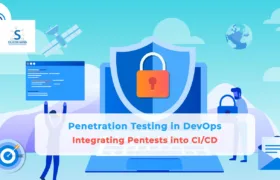An increasing number of companies are embracing microservices architecture to improve scalability, flexibility, and robustness. As organizations implement this approach, it is essential to conduct comprehensive API testing in microservices to guarantee the reliability and efficiency of decentralized applications.
The Rise of Microservices
Microservices architecture breaks down complex applications into smaller, independent units that communicate through APIs. This approach enables teams to develop, deploy, and scale services independently, ultimately leading to faster release cycles and improved resource utilization. However, the decentralized nature of this architecture presents unique challenges, particularly in terms of API integrity and efficiency.
Why Focus on API Testing?
As services interact through APIs, any potential failure or bugs can cause significant ripple effects across the application. Effective API testing in microservices is not just a good practice but is essential for:
- Ensuring smooth communication: Detecting inconsistencies in data exchange between services.
- Enhancing service reliability: Preventing downtime and enhancing user experience.
- Facilitating faster releases: Enabling teams to efficiently identify and rectify issues.
Thus, as organizations embrace this architecture, the methods and strategies for API testing must evolve to meet the demands of modern software development.
Understanding Microservices Architecture
Transitioning from traditional monolithic structures, microservices architecture offers a more modular approach. This design enables organizations to build applications as a suite of small, independently deployable services that communicate via APIs.
Basics of Microservices
At its core, microservices architecture is characterized by:
- Independent Services: Each microservice operates independently, allowing teams to develop and deploy them without impacting others.
- Decentralized Data Management: Each service manages its own data, promoting autonomy and reducing interdependencies.
- Communication through APIs: Services interact through lightweight protocols, typically HTTP or messaging queues, ensuring efficient data exchange.
This structure supports agility, as teams can quickly iterate on specific services based on user feedback or evolving requirements.
Importance of API Testing in Microservices
API testing is paramount in microservices architecture for several reasons:
- Service Interdependence: A single microservice’s failure can affect others, making robust API testing essential for ensuring smooth communication.
- Quality Assurance: Thorough testing identifies potential issues before they reach production, mitigating risks to end-users.
- Performance Validation: APIs should efficiently handle requests, and performance testing ensures that services meet required API response times.
Therefore, API testing in microservices not only safeguards system integrity but also enhances overall application performance, paving the way for reliable and successful deployments.
Best Practices for API Testing in Microservices
As organizations adopt microservices architecture, a robust approach to API testing is essential for maintaining application integrity and performance. Here, we delve into best practices that can significantly enhance API testing efforts.
Implementing Automation in API Testing
Automating API testing is vital for improving efficiency and accuracy. This practice allows teams to:
- Reduce Manual Errors: Automation minimizes human intervention, thereby decreasing the likelihood of mistakes.
- Increase Coverage: Automated tests can cover more scenarios at a faster rate, enabling comprehensive validation of various interactions.
- Facilitate Continuous Integration: Automated testing seamlessly integrates with CI/CD pipelines, allowing for immediate feedback on code changes.
Testing tools like Postman, JUnit, or Selenium can serve as excellent frameworks for automating API tests.
Conducting Thorough Endpoint Testing
Endpoint testing is critical to validate the functionality of each microservice. Best practices here include:
- Validation of Input and Output: Ensure that APIs correctly handle different input types and return expected outputs, including error messages.
- Testing for Edge Cases: Identify how APIs behave under unusual circumstances or boundaries to prevent unexpected failures in production.
- Security Checks: Conduct tests to ensure APIs are securely handling data and not exposing vulnerabilities.
By prioritizing automation and comprehensive endpoint testing, teams can ensure robust API performance that aligns with the dynamic needs of microservices architecture.
Organizations should regularly assess and adapt these strategies. This alignment ensures seamless integration of digital initiatives, leading to enhanced performance and a competitive edge in the market.

When it comes to conducting effective API testing in microservices environments, Silicon Mind stands out as your expert partner, equipped to navigate the complexities of modern software architecture. Our comprehensive approach to API testing is designed to enhance reliability and performance, ensuring that each service communicates seamlessly within your ecosystem. With our deep expertise in microservices and best practices for API testing, we help you implement robust strategies and utilize the right tools tailored to your specific needs.
Are you ready to optimize your API testing process? Partner with Silicon Mind today to unlock the full potential of your microservices architecture. Contact us now to schedule a FREE consultation and embark on a collaborative journey toward mastering effective API testing strategies that drive success in your development efforts.
Performance Testing in Microservices
With microservices architecture, ensuring that each service performs optimally under various conditions is vital for delivering a seamless user experience. Performance testing, particularly load testing, plays a crucial role in identifying potential bottlenecks and ensuring system reliability.
Importance of Load Testing
Load testing simulates real-world usage to evaluate how a service behaves under specific conditions. This type of testing is essential because:
- Identifies Scalability Issues: Load testing helps pinpoint how well services can scale up or down while handling varied user demands.
- Reveals Performance Bottlenecks: Early identification of slow response times or failures can prevent issues that might arise under production loads.
- Ensures Reliability: By validating that services maintain performance under stress, organizations can assure users of a consistent experience.
Thus, load testing is integral to a proactive performance management strategy.
Strategies for Performance Optimization
To enhance performance across microservices, implement the following strategies:
- Optimize API Calls: Minimize the number of API requests by consolidating calls wherever possible to reduce latency.
- Utilize Caching: Implement caching strategies to store frequently accessed data, reducing the load on services and improving response times.
- Monitor Performance Metrics: Use monitoring tools to track key metrics such as response times, throughput, and error rates, allowing teams to address issues as they arise.
By prioritizing load testing and adopting effective optimization strategies, organizations can ensure their microservices architecture delivers exceptional performance even under high demand.
Security Testing in Microservices APIs
As organizations embrace microservices architecture, safeguarding APIs becomes a paramount concern. Each microservice communicates with others, increasing the attack surface and the complexity of securing these interactions. Therefore, robust security testing is crucial in ensuring the integrity and confidentiality of data.
Importance of Security Testing
Security testing is vital for several reasons:
- Protection of Sensitive Data: Microservices often handle sensitive information. Effective security measures help prevent data breaches.
- Minimizing Risks: Identifying vulnerabilities early allows teams to address issues before they can be exploited by malicious actors.
- Maintaining Compliance: Many industries require stringent compliance with data protection regulations. Regular security testing helps ensure adherence and avoid legal repercussions.
Given the interconnected nature of microservices, security testing cannot be overlooked.
Common Security Vulnerabilities in Microservices
Microservices introduce unique security challenges. Some prevalent vulnerabilities include:
- API Authentication and Authorization Flaws: Inadequately secured APIs can lead to unauthorized access.
- Data Leakage: Poorly implemented data handling practices can expose sensitive information.
- Insecure Communication: Failure to encrypt data in transit can make it susceptible to interception.
By prioritizing security testing and being vigilant about common vulnerabilities, organizations can significantly enhance the security posture of their microservices architecture, protecting both their systems and their users.
Monitoring and Debugging APIs in Microservices Environments
With the complexities of microservices architecture, effective monitoring and debugging are essential to maintain performance and reliability. Implementing the right tools and techniques empowers teams to proactively identify and resolve issues, ensuring that services run smoothly.
Implementing Monitoring Tools
To keep track of microservices’ health and performance, integrating robust monitoring tools is crucial. Key benefits include:
- Real-time Insights: Continuous monitoring provides visibility into service metrics, such as response times and error rates, enabling quick response to anomalies.
- Anomaly Detection: Tools can alert teams to unusual activity, helping identify potential issues before they escalate.
- Health Dashboards: A centralized view of all services aids in assessing system performance and facilitates resource management.
Popular monitoring tools include Prometheus, Grafana, and New Relic, which help teams track essential metrics effectively.
Effective Debugging Techniques
Once issues arise, having strong debugging techniques is vital for resolution:
- Centralized Logging: Implementing a centralized log management system consolidates logs from various services, making it easier to trace issues across microservices.
- Distributed Tracing: Techniques like OpenTracing or Jaeger allow teams to visualize the flow of requests, helping diagnose where delays or failures occur.
- Service-Level Monitoring: Establishing service-level indicators (SLIs) and service-level objectives (SLOs) helps teams measure service performance against defined benchmarks.
By utilizing proper monitoring tools and effective debugging techniques, organizations can enhance their microservices architecture’s resilience and ensure optimal API performance.
Conclusion
As microservices architecture continues to gain traction, mastering API testing is essential for maintaining the integrity and performance of distributed applications. Summarizing the expert tips outlined, organizations can approach API testing with greater confidence.
Recap of Expert Tips for Effective API Testing in Microservices Environments
To ensure success in API testing within microservices, consider the following best practices:
- Implement Automation: Streamline testing efforts to cover more scenarios efficiently and reduce manual errors.
- Focus on Endpoint Testing: Thoroughly validate inputs and outputs, checking for both expected responses and error handling.
- Conduct Regular Load Testing: Simulate real-world conditions to identify performance bottlenecks and ensure scalability.
- Prioritize Security Testing: Regularly check for common vulnerabilities to protect sensitive data and maintain compliance.
- Leverage Monitoring Tools: Implement monitoring systems for real-time insights, which can facilitate proactive issue detection.
Future Trends in API Testing for Microservices
Looking ahead, several trends are poised to shape the landscape of API testing:
- AI and Machine Learning: These technologies could enhance testing by automating complex processes and providing intelligent insights.
- Shift-Left Testing: Integrating testing earlier in the development cycle promotes swift identification of issues, reducing overall costs and deployment delays.
- Enhanced Security Protocols: As cyber threats evolve, security testing will become even more integral to API strategies.
By embracing these expert recommendations and upcoming trends, organizations can ensure their API testing practices remain robust, securing the future of their microservices architecture.
Read More


